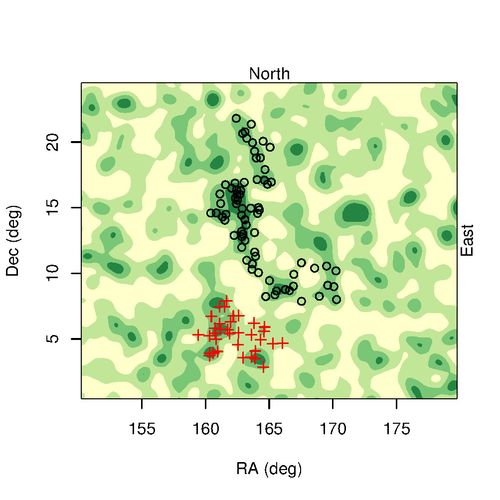

| Visitors Now: | |
| Total Visits: | |
| Total Stories: |

| Story Views | |
| Now: | |
| Last Hour: | |
| Last 24 Hours: | |
| Total: | |
The Largest Structure in the Universe Discovered
read more at Anne’s Astronomy News http://annesastronomynews.com/
An international team led by academics from the University of Central Lancashire has found the largest known structure in the Universe. The large quasar group (LQG) is so large that it would take a spacecraft, travelling at the speed of light, some 4 billion years to cross it.

This artist’s impression shows how a distant quasar may have looked like. Image Credit: ESO / M Kornmesser
Quasars are galaxies from the early Universe that undergo brief periods of extremely high brightness that make them visible across huge distances. These periods are ‘brief’ in astrophysics terms but actually last 10-100 million years.
Since 1982 it has been know that quasars tend to group together in clumps or ‘structures’ of surprisingly large sizes, forming large quasar groups or LQGs.
The team, led by Dr Roger Clowes from UCLan’s Jeremiah Horrocks Institute, has identified the LQG which is so significant in size it also challenges the Cosmological Principle. The Cosmological Principle is the assumption that the Universe, when viewed at a sufficiently large scale, looks the same no matter where you are observing it from.

The coloured background indicates the peaks and troughs in the occurrence of quasars at the distance of the LQG. Darker colours indicate more quasars, lighter colours indicate fewer quasars. The LQG is clearly seen as a long chain of peaks indicated by black circles. (The red crosses mark the positions of quasars in a different and smaller LQG). The horizontal and vertical axes represent right ascension and declination, the celestial equivalent of longitude and latitude. The map covers around 29.4 by 24 degrees on the sky, indicating the huge scale of the newly discovered structure. Image Credit: R. G. Clowes / UCLan
The modern theory of cosmology is based on the work of Albert Einstein, and depends on the assumption of the Cosmological Principle. The Principle is assumed but has never been demonstrated observationally ‘beyond reasonable doubt’.
To give some sense of scale, our galaxy, the Milky Way, is separated from its nearest neighbour, the Andromeda Galaxy, by about 2.5 million light-years. Whole clusters of galaxies can be 6-10 million light-years across but LQGs can be 650 million light-years or more across. Although, based on the Cosmological Principle and the modern theory of cosmology, calculations suggest that astrophysicists should not be able to find a structure larger than 1.2 billion light-years.
However, Dr Clowes’ discovery has a typical dimension of 1.6 billion light-years. But because it is elongated, its longest dimension is 4 billion light-years – that is some 1,650 times larger than the distance from the Milky Way to Andromeda.

Dr Roger Clowes from UCLan’s Jeremiah Horrocks Institute
Dr Clowes said: “While it is difficult to fathom the scale of this LQG, we can say quite definitely it is the largest structure ever seen in the entire Universe. This is hugely exciting – not least because it runs counter to our current understanding of the Universe. The Universe doesn’t seem to be as uniform as we thought.
“Travelling at the speed of light, it would still take 4 billion light-years to cross. This is significant not just because of its size but also because it challenges the Cosmological Principle, which has been widely accepted since Einstein. Our team has been looking at similar cases which add further weight to this challenge and we will be continuing to investigate these fascinating phenomena.”
Dr Clowes worked with Kathryn Harris (UCLan), Srinivasan Raghunathan, Luis E. Campusano (Universidad de Chile), Ilona K. Sochting (University of Oxford) and Matthew J. Graham (California Institute of Technology).
The team’s paper will be published online by Monthly Notices of the Royal Astronomical Society.
Source: The University of Central Lancashire (UCLan)
n/a
2013-01-14 01:53:58
Source: http://annesastronomynews.com/the-largest-structure-in-the-universe-discovered/
Source:


